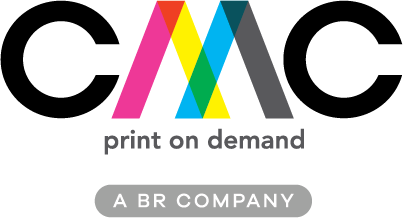Understanding the print and production process will undoubtedly save you money when ordering marketing materials. Knowing the options between different printing processes and making informed decisions throughout the design and production stages will help you lower costs. Here’s what you need to be mindful of when ordering print.
Paper
Work with your designer and printer to choose paper stock for your project. There are hundreds of paper types, and your selection can affect the piece’s appearance and cost. Considerations for choosing paper include durability, use, printing processes, and more. For example, a catalog selling upscale clothing requires thicker paper and a coated finish for crisp color printing, whereas a direct mail piece, which has a short life span, needs less expensive, uncoated paper. It is also a good idea to check with your printer to find out what paper size options fit best with their press.
Color
Color increases the cost of printed materials, but it also enhances the overall appearance and effectiveness. The key is to be selective and only use color when it’s necessary. For example, some pieces like brochures or business cards may require color while pieces that change frequently such as price sheets or a daily specials menu may not.
Bleed vs Non Bleed
You will need to decide whether you prefer bleed or non-bleed. When creating a design for print, you have two options: It can bleed (meaning it will extend all the way to the edge of the paper) or not (meaning there will be a slight boarder on the edge of your design). With a bleed, a larger paper size is needed which is then trimmed down, making printing more expensive.
Digital vs Offset
The growth of digital printing technology has brought technical improvements, more options and exciting new features to today’s commercial printing. It has also brought some confusion. An understanding of the advantages and disadvantages of digital printing and how it compares to traditional offset printing is critical in making the right choice. Daniels specializes in both digital and offset printing, which is better for you, will depend on your needs.
Advantages of Offset
- High image quality
- Offset printing requires lengthy set-up times and charges. These charges remain the same regardless of whether you run 1000 or 5000 pieces. Therefore, the overall cost per piece will go down as the quantities increase. With digital, there are no set-up fees and the cost per piece remains the same regardless of the quantity you run.
- Quality and cost-effectiveness in high volume jobs. While today’s digital presses are close to the cost/benefit ratio of offset for high quality work, they are not yet able to compete with the volume an offset press can produce.
Advantages of Digital
- Shorter turnaround.
- Every print is the same. More accurate counts, less waste and fewer variations, due to not having to balance ink and water during press run.
- Cheaper low volume printing. While the unit cost of each piece may be higher than with offset printing, when setup costs are included digital printing provides lower per unit costs for very small print runs.
- Variable Data Printing can allow you to customize your digital printing. Using information from a database or external file, text and graphics can be changed on each piece without stopping or slowing down the press. For example, personalized letters can be printed with a different name and address on each letter. Variable data printing is used primarily for direct marketing, customer relationship development and advertising.
